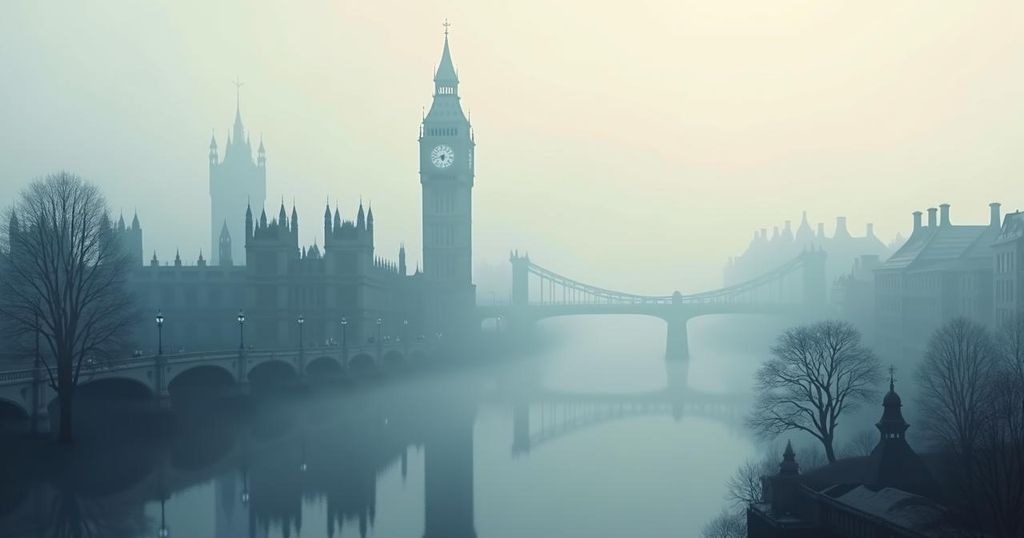A new exhibition, “Monet and London. Views of the Thames,” showcases Claude Monet’s works depicting London and its famous smog, celebrating his fascination with the city’s atmosphere. Opening today, it features his paintings of the Houses of Parliament and the Thames, fulfilling a long-held wish.
Claude Monet’s fascination with London’s atmospheric smog is celebrated in a new exhibition entitled “Monet and London. Views of the Thames,” which opens today. This exhibition marks the first opportunity to see his works featuring the Houses of Parliament and the River Thames, fulfilling a wish he expressed over 120 years ago. During his three visits to London between 1899 and 1901, Monet was captivated by the city’s dense pollution and its impact on light and colour. He stayed at the Savoy Hotel, which provided him with a stunning view of the bridges spanning the Thames. To capture images of the Palace of Westminster, he positioned himself across the river at St Thomas’ Hospital. Monet wrote about the beauty of London and remarked on the transformational qualities of its weather in his letters, noting the diverse palettes that fog provided. He stated to his wife: “You wouldn’t believe the amazing effects I have seen in the nearly two months that I have been constantly looking at the River Thames.” A journalist quoted him saying, “London is the more interesting that it is harder to paint. The fog assumes all sorts of colours; there are black, brown, yellow, green, purple fogs.”
Claude Monet, a renowned French Impressionist painter, famously visited London during the late 19th century. At this time, London was the world’s most populous and industrially rich city, known for its pollution and fog. Monet’s admiration for the effects of this smog on the river and cityscape greatly influenced his artistic output, leading him to capture the interplay of light and shadow in his works. His letters to family reveal his evolving perception of the city and its beauty, driven by its atmospheric conditions.
The exhibition showcases Monet’s unique perspective on London’s pollution, illustrating how the artist found beauty in what many considered an undesirable aspect of the city. His works not only represent the physical landscape but also reflect the shifting moods of the River Thames under various weather conditions, reaffirming his status as a master of light in painting.
Original Source: www.dawn.com







